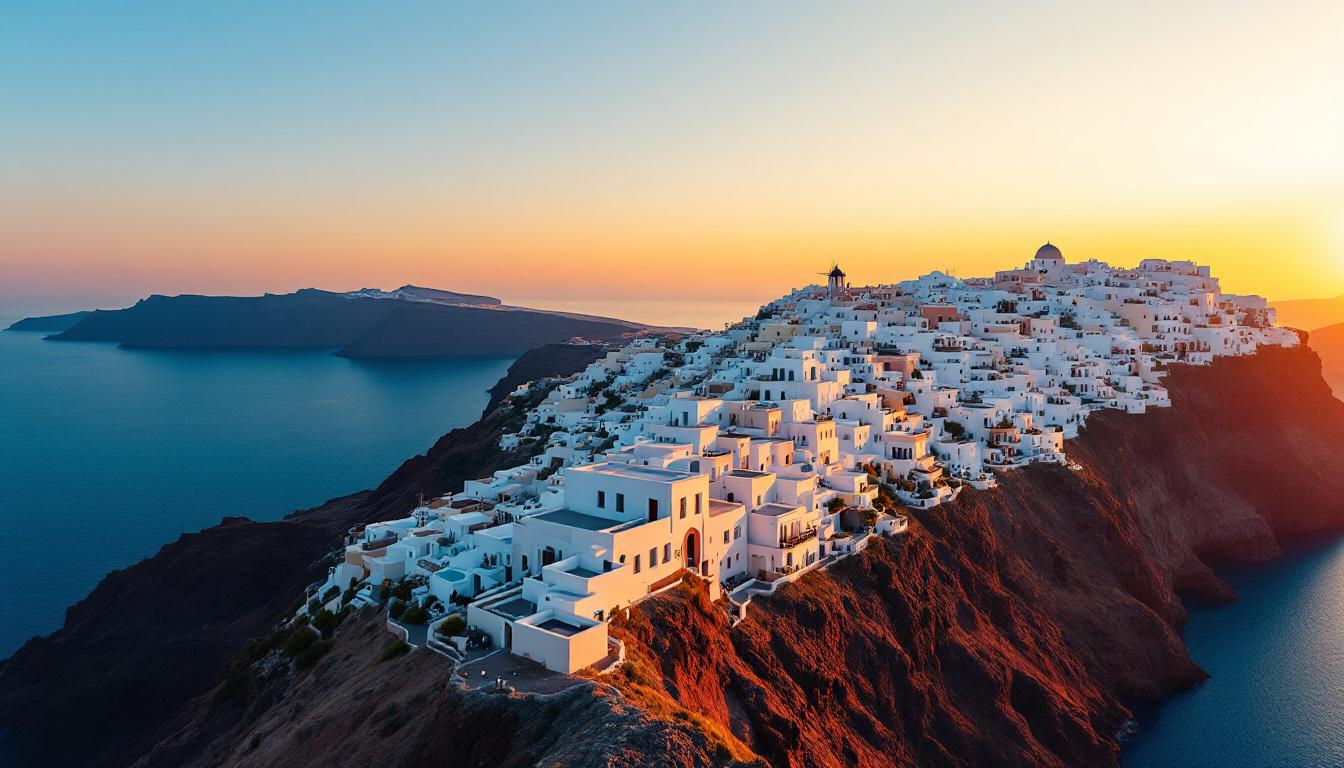Santorini floats on the azure Aegean Sea like a half-moon of whitewashed perfection. This volcanic Greek island isn’t just another Mediterranean destination—it’s nature’s masterpiece, where stark white buildings cling dramatically to volcanic cliffs, and sunsets paint the sky in fiery hues that photographers chase relentlessly. What many visitors don’t realize is that they’re standing on the remnants of one of history’s most catastrophic volcanic eruptions, which may have inspired the legend of Atlantis.
The geological marvel that shaped a paradise
Santorini’s crescent shape isn’t random—it’s the result of a massive volcanic eruption around 1600 BCE that collapsed the center of the island into the sea. Today, visitors can sail across what was once the heart of a mountain, with water depths reaching 1,300 feet. The caldera’s sheer cliffs showcase layers of volcanic ash, pumice, and solidified lava—a geological storybook that scientists still study.
Local guide Maria Kostaras explains,
“When people look at our beautiful island, they rarely consider they’re standing on a volcano that’s still active. The last eruption was in 1950, and our hot springs still bubble with volcanic energy.”
Villages that defy gravity and imagination
Oia (pronounced EE-ah) sits majestically atop the northern tip of the caldera, where sunset-seeking crowds gather each evening. But venture to Imerovigli, nicknamed “the balcony to the Aegean,” for equally spectacular views without the tourist crush. Here, the clifftop walking path offers panoramic vistas that rival those in Halong Bay’s limestone landscapes.
Ancient whispers beneath volcanic ash
While Akrotiri lacks the dramatic setting of Oia, this archaeological site offers something more profound—an ancient city preserved by volcanic ash, similar to Pompeii but 1,700 years older. Wandering through its excavated streets reveals sophisticated three-story buildings, advanced drainage systems, and vibrant frescoes from 4,000 years ago.
Dr. Nikos Papadopoulos, archaeologist, notes,
“What amazes visitors most is the modernity of this Bronze Age settlement. Their indoor plumbing and artistic achievements rival civilizations that came thousands of years later.”
Beaches painted by volcanic forces
Unlike the typical Greek island beaches, Santorini offers shores in striking colors. Red Beach dazzles with rust-colored cliffs and crimson sand, while Perissa and Kamari showcase black volcanic sand that heats up dramatically under the Mediterranean sun. The white beach near Akrotiri completes this geological rainbow with pale pumice formations.
A culinary landscape shaped by volcanic soil
Santorini’s cuisine reflects its volcanic terroir, producing intensely flavored cherry tomatoes, white eggplants, and capers that thrive in the mineral-rich ash soil. Local vineyards produce distinctive Assyrtiko wines from grapes grown in “koulouri”—circular formations that protect vines from fierce winds. This ancient technique creates wines with a characteristic minerality that rivals the celebrated traditions found in medieval Spanish wine regions.
Beyond the postcard views
Escape the crowds by exploring inland villages like Pyrgos and Megalochori, where elderly locals still gather at traditional kafeneions, playing backgammon while sipping Greek coffee. These settlements offer glimpses into authentic island life before tourism transformed Santorini into an Instagram phenomenon.
In Emporio, maze-like streets wind beneath a medieval kasteli (castle), where residents once retreated during pirate attacks. The 15th-century fortress provides panoramic views that rival those of sacred islands with ancient temples elsewhere in the world.
Sunset spectacle that lives up to the hype
The Santorini sunset deserves its legendary status. As the sun sinks toward the horizon, the white buildings glow gold, then pink, then violet, creating a light show that transforms something as ordinary as sunset into a transcendent experience. Finding your perfect viewing spot becomes a personal quest—whether from a quiet church in Imerovigli or a secluded cape near the lighthouse.
The island’s dramatic transformation from fishing village to global destination mirrors the development seen in desert metropolises that evolved from humble beginnings.
Like Cape Town with its tablecloth-draped mountain, Santorini proves that when nature crafts something truly spectacular, humans will find a way to build alongside it. This volcanic crescent isn’t just a destination—it’s nature’s reminder that destruction sometimes creates something more beautiful than what came before.
